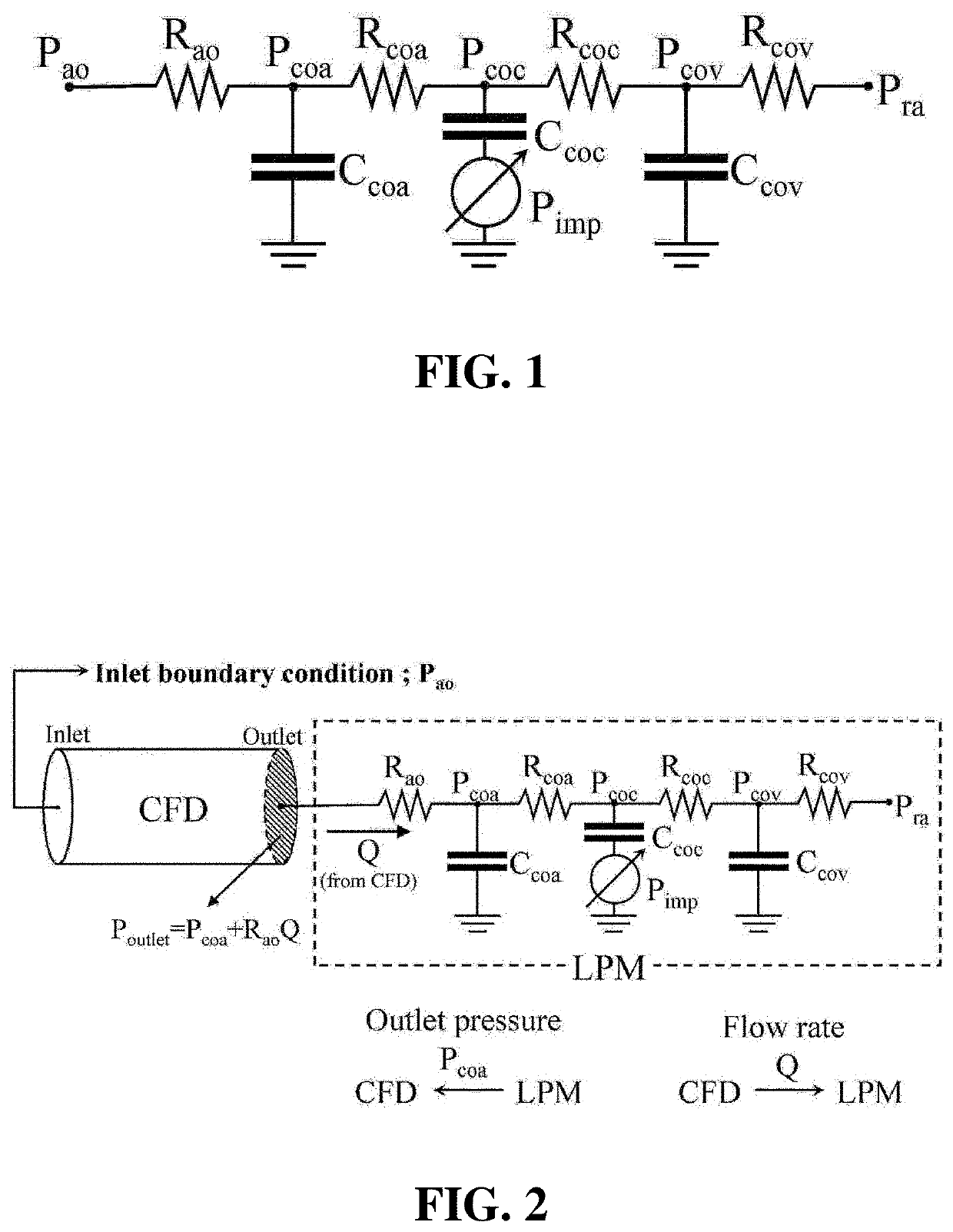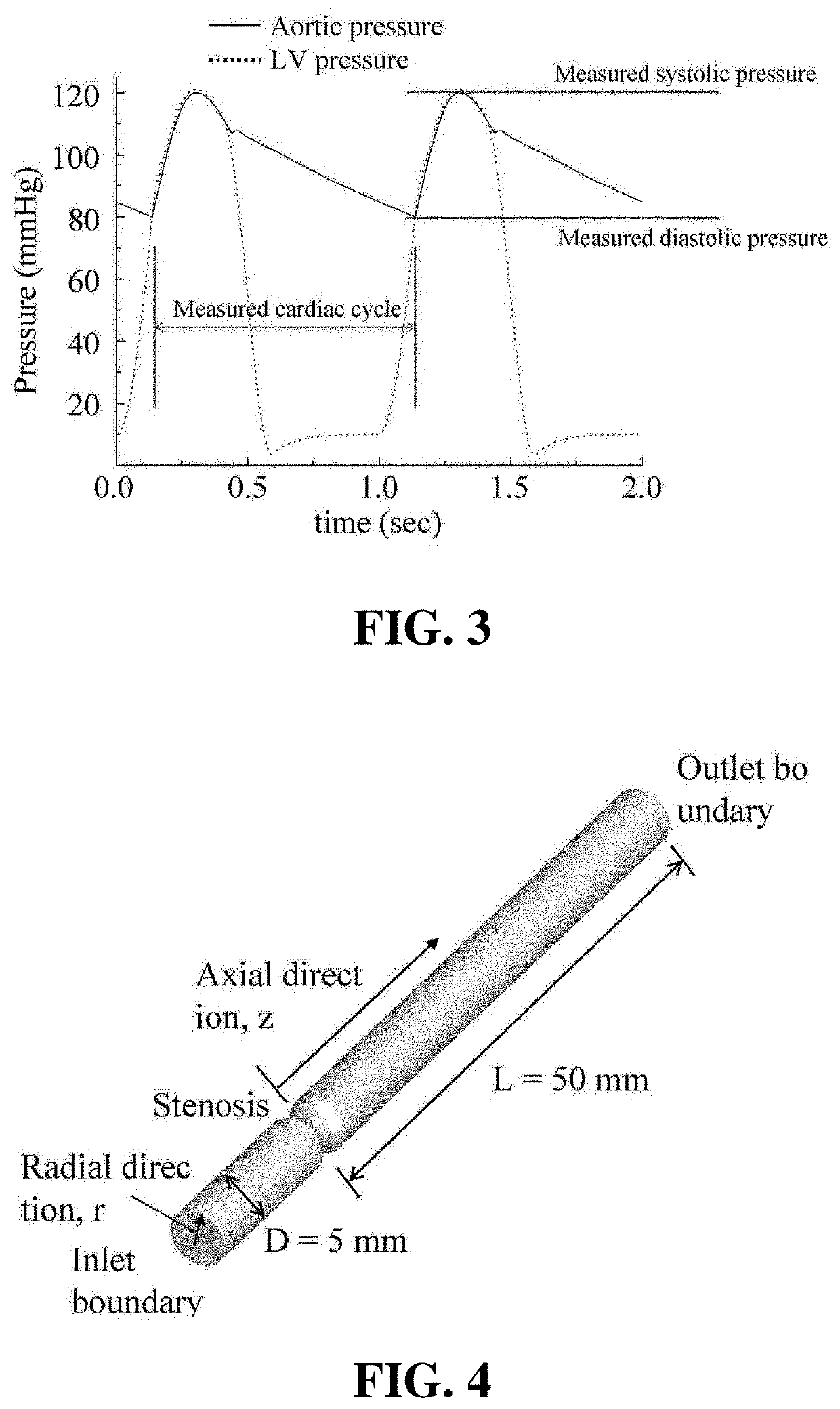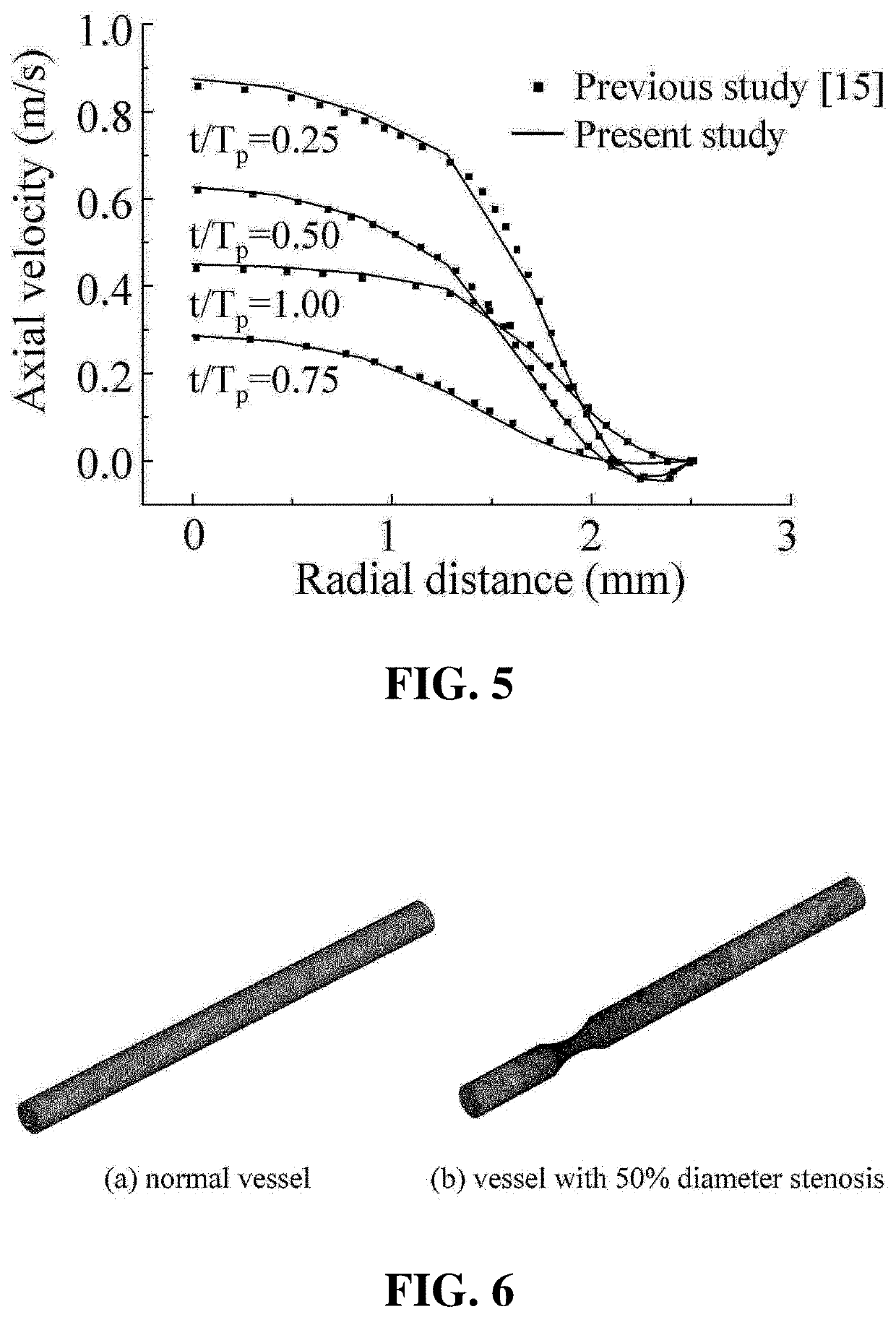Method for determining patient-specific blood vessel information
a technology for blood vessels and information, applied in the field of determining patient-specific blood vessels, can solve the problems of increasing the uncertainty of simulation, reducing the segmentation accuracy, and reducing the accuracy of segmentation, so as to reduce the uncertainty of a model, reduce the simulation amount of the computational fluid dynamics model and the lumped parameter model, and shorten the calculation time for the determination of ffr
- Summary
- Abstract
- Description
- Claims
- Application Information
AI Technical Summary
Benefits of technology
Problems solved by technology
Method used
Image
Examples
Embodiment Construction
[0057]Other objects, specific advantages and novel features of the present invention will become more apparent from the following detailed descriptions of preferred embodiments made in conjunction with the accompanying drawings.
[0058]Hereinafter, a novel patient-specific model for calculating a fractional flow reserve (FFR) of a coronary artery according to the present invention and a method for determining a fractional flow reserve will be disclosed.
[0059]The method according to the present invention uses only the coronary arteries for a computational fluid dynamics model and includes a lumped parameter model of a coronary artery blood vessel system. The method according to the present invention provides a simple boundary condition in respect of the shape of a coronary artery. As compared with the conventional method, the method according to the present invention can reduce the calculation amount and can shorten the calculation time. This method is simpler than the conventional met...
PUM
 Login to View More
Login to View More Abstract
Description
Claims
Application Information
 Login to View More
Login to View More - R&D
- Intellectual Property
- Life Sciences
- Materials
- Tech Scout
- Unparalleled Data Quality
- Higher Quality Content
- 60% Fewer Hallucinations
Browse by: Latest US Patents, China's latest patents, Technical Efficacy Thesaurus, Application Domain, Technology Topic, Popular Technical Reports.
© 2025 PatSnap. All rights reserved.Legal|Privacy policy|Modern Slavery Act Transparency Statement|Sitemap|About US| Contact US: help@patsnap.com



